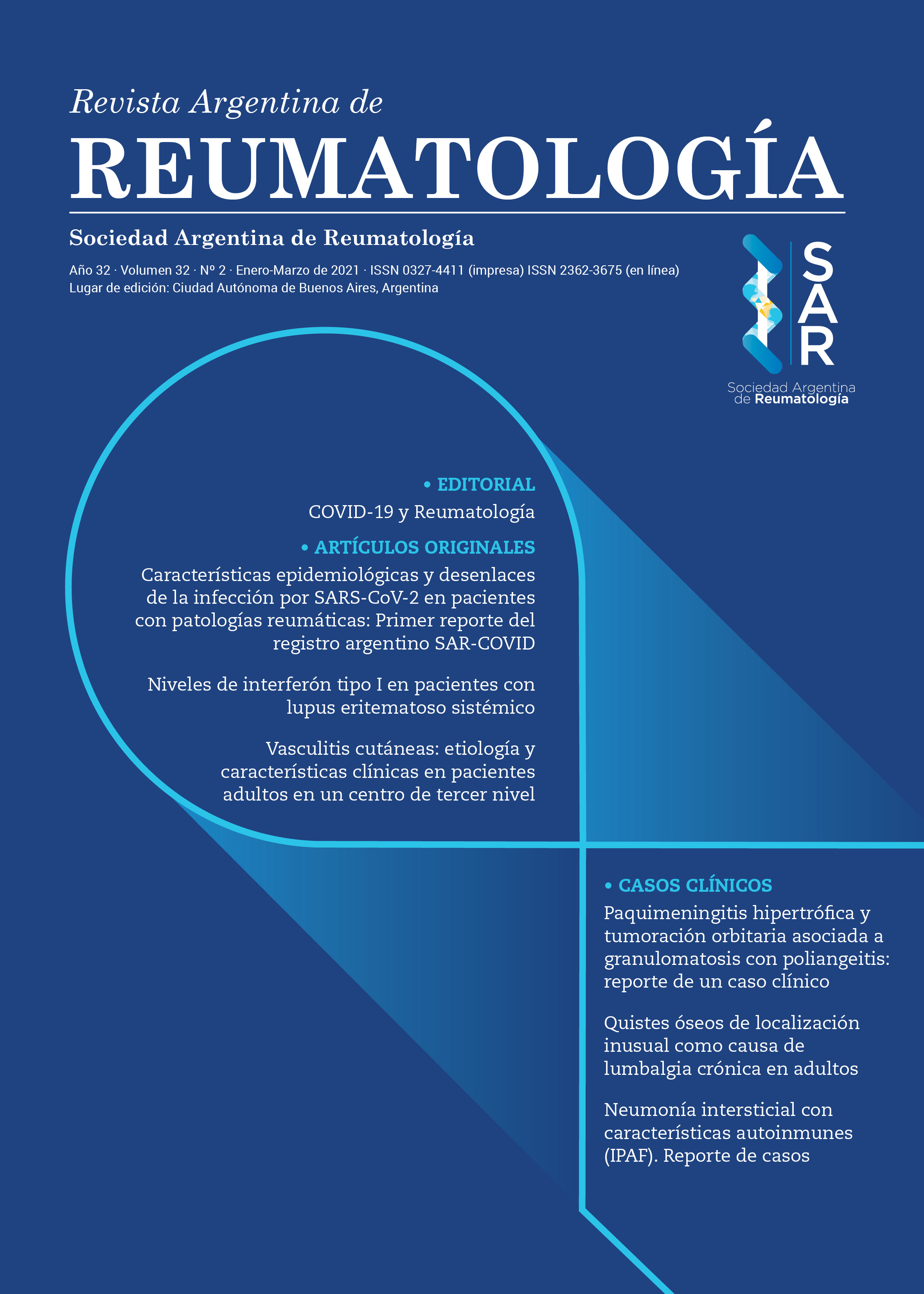Síndrome de Schnitzler tratado con canakinumab
Resumen
El síndrome de Schnitzler es un raro trastorno caracterizado por rash urticariano crónico y gammapatía monoclonal, acompañado de fiebre intermitente, artralgias o artritis, dolor óseo y linfadenopatías, en el cual la interleuquina 1 (IL-1) tiene un papel preponderante. Se presenta el caso de un varón de 48 años que reúne criterios para síndrome de Schnitzler y que luego de fallar a múltiples tratamientos presenta respuesta exitosa a canakinumab.Citas
I. Schnitzler L. Lesions urticariennes chroniques permanentes (erythemepetaloide?). Cas cliniques 1972; n° 46 B. Journee Dermatologique d’Angers, 28 Octobre 1972.
II. De Koning HD, Bodar EJ, van der Meer J W. Schnitzler syndrome study group. Schnitzler syndrome: beyond the case reports: review and follow-up of 94 patients with an emphasis on prognosis and treatment. Seminars in Arthritis and Rheumatism 2007;37(3):137-148.
III. Noster R, De Koning HD, Maier E, et al. Dysregulation of proinflammatory versus anti-inflammatory human TH17 cell functionalities in the autoinflammatory Schnitzler syndrome. Journal of Allergy and Clinical Immunology 2016;138(4):1161-1169.
IV. De Koning HD. Schnitzler’s syndrome: lessons from 281 cases. Clin Transl Allergy 2014;4:41.
V. Krause K, Tsianakas A, Wagner N, Fischer J, Weller K, Metz M, Church MK, Maurer M. Efficacy and safety of canakinumab in Schnitzler’s syndrome: a multi-center randomized placebo-controlled study, Journal of Allergy and Clinical Immunology (2016).
VI. Lipsker D. The Schnitzler syndrome. Orphanet J Rare Dis. 2010;5:38.
VII. Maaman Bashir et al. A Rare but Fascinating Disorder: Case Collection of Patients with Schnitzler Syndrome. Case Reports in Rheumatology 2018.
VIII. Jesica Gallo y Sergio Paira. Síndrome de Schnitzler. Reumatol Clin. 2015;11(2):123-130.
IX. Ruri Akimoto et al. Schnitzler’s Syndrome with IgG κ Gammopathy. The Journal of Dermatology 2002;29:735-738.
X. Gilson M, Abad S, Larroche C, Dhote R: Treatment of Schnitzler syndrome with anakinra. Clin Exp Rheumatol 2007;25:931.
XI. Herráez Albendea MM, López Rodríguez M, López de la Guía A, Canales Albendea MA. Síndrome de Schnitzler. Reumatol Clin. 2013;9:383-5.
XII. Gusdorf L, Lipsker D. Neutrophilic urticarial dermatosis: A review. Ann Dermatol Venereol (2018).
XIII. Dispenzieri A, Kyle RA, Lacy MQ, Rajkumar SV, Therneau TM, Larson DR, et al. POEMS syndrome: definitions and longterm outcome. Blood 2003;101:2496-506.
XIV. De Koning, J. Schalkwij, J. Van der Ven-Jongerkriig, et al. Sustained efficacy of the monoclonal anti-interleukin-1 beta antibody canakinumab in a 9-month trial in Schnitzler’s syndrome. Annals of the Rheumatic Diseases 2013;72(10):1634-1638.
XV. Pesek R, Fox R. Successful treatment of Schnitzler syndrome with canakinumab, Cutis 2014;94:11-E12.
Derechos de autor 2019 Sociedad Argentina de Reumatología

Esta obra está bajo licencia internacional Creative Commons Reconocimiento-NoComercial-SinObrasDerivadas 4.0.






